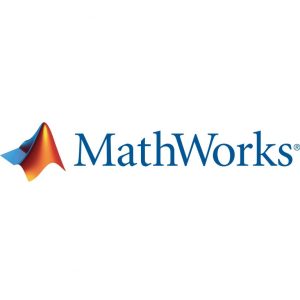There’s no substitute for having good data – or so we thought. By using simulations for AI development, engineers can now develop synthetic data and mimic real-world systems to create successful models
AI models rely on good data to work effectively. Feeding them incomplete, biased or inaccurate data will produce an ineffective model.
But collecting complete, unbiased and accurate data can take time, says Ruth-Anne Marchant, Senior Team Lead at Mathworks.
“Take a mining operation system as an example. A mining company would want to use its system with as little downtime as possible. They might task an engineer with creating an AI algorithm to predict when the system will go down or when a component will fail. To do this, the engineer would need a lot of data in both a nominal operation situation and different failure conditions.”
The problem is that there are only a handful of true fault scenarios in a real-life mining operation each year.
“Waiting for failures to happen in the real world can take considerable time. An alternative is to take the operations offline and run the system until there’s a failure, but then the company would break components and equipment.”
Conducting data collection this way would be difficult, timely, and expensive. But integrating simulation with AI workflows can help overcome this challenge.
Simulation: an alternative to good data
In the absence of a complete real-life data set, engineers can create a simulation model that reflects a range of scenarios. This simulation model could leverage existing data from the real-life system for model accuracy.
“This would include nominal operating conditions, as well as in failure mode conditions and a range of permutations of these conditions,” says Marchant.
“Through these simulations, engineers have a wider and more complete set of data from which they can use to train an AI model.”
One prime example of the intersection of AI and simulation occurred recently when MathWorks partnered with Hydro-Québec, an electrical utility based in Canada, to develop a system that would detect the location of electrical grid faults.
Engineers working on the project – a proof-of-concept case study that is yet to be deployed – created a simulation model of the electrical grid to simulate different grid fault scenarios.
“They would identify a grid fault at a particular location, run a simulation and gather the system data.”
This process would then be replicated across 10,000 fault locations.
“This data was used to train a machine learning algorithm that could detect the location of grid faults. By using this approach in a grid operator system, engineers can reduce the time it takes to determine where a fault is happening. They’ll have a better sense of the location to dispatch people to investigate the fault.”
To model the electrical system, engineers applied MathWorks’ solutions, including Simulink and Simscape Electrical, before using the Statistics and Machine Learning Toolbox to create a machine learning algorithm.
One significant benefit of using MATLAB and Simulink products is that they form an integrated tools chain.
“An engineer can use Simulink to model and simulate the full operating range of a system and generate synthetic data. The engineers can then build an AI model using our low-code workflows and apps. They can continue to refine these models, test the AI algorithms, and then bring them back into Simulink to test them within the simulated environment,” says Marchant.
“Engineers can also leverage MATLAB and Simulink deployment products to implement and deploy the algorithms to the AI models.”
Expanding the use of AI and simulations
Using simulations to train and validate AI models is one of many ways that AI and simulations converge.
AI can also be used to create reduced-order models.
“Instead of using a detailed high-fidelity model in a system-level simulation, engineers could use a reduced-order model, which is a quick approximation of a complex model,” says Marchant.
“That allows the simulation to run faster, granting engineers more time in the design exploration phase.”
In another application of AI and simulations, the two fields can intersect to develop virtual sensors.
“This improves the system performance and reduces hardware costs. A clear example is a control system. In some applications, it is impractical or impossible to measure signals of interest with a physical sensor. In these scenarios, AI is often used to create virtual sensors to estimate these critical signals.
“There are so many applications, and I think more and more companies will be looking to use AI and simulations in their business.”
Learn more with Mathworks about how to use simulations for AI.

